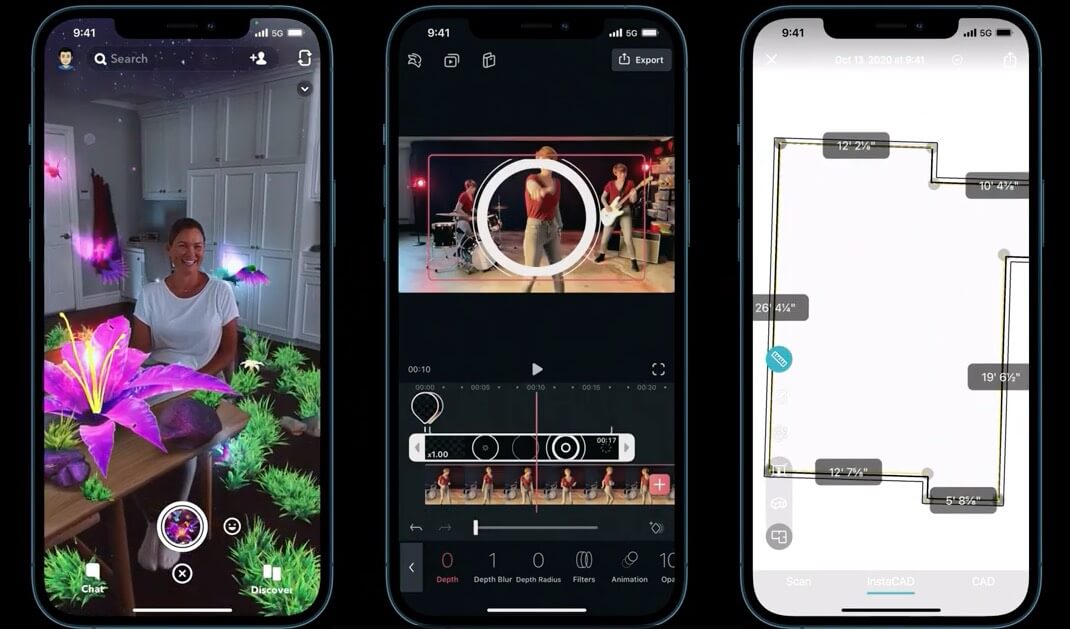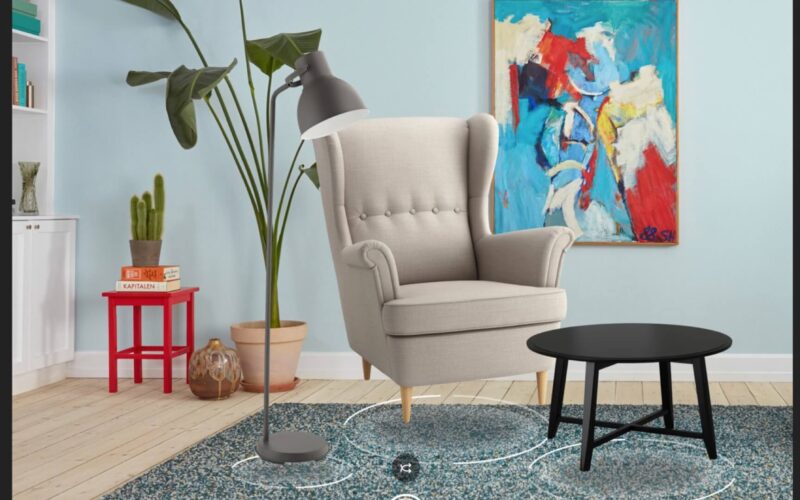It was with the release of the 2020 iPad Pro that Apple introduced the highly intriguing LiDAR Scanner. And now, it has become an essential element of iPhone 12 Pro and 12 Pro Max. But what exactly is LiDAR, and how does it work? Let’s take a deep dive into this exciting technology, how it links to augmented reality, and what uses or benefits LiDAR can have.

What is LiDAR Scanner?
LiDAR stands for Light Detection and Ranging. The ToF, aka Time of Flight scanner, uses light to determine the distance between two objects.
It measures the time taken by a light source to reach an object and reflect. This is not a new technology per se; NASA is using it for space missions. And meteorologists are using LiDAR for better weather predictions.
Recently, this technology is being employed to build 3D maps of the surrounding. Wherein it physically sweeps the area and calculates distances quite like a radar dish.
Remarkably, Apple has managed to fix it into the iPhone 12 Pro series and iPad Pro.
How Does LiDAR Scanning Work on iPhone 12 and iPad Pro?

The smartly engineered scanner sends multiple pulses of invisible green spectrum lasers and measures their reflection time.
It works at a photon level and operates at nanosecond speeds, thousands of times per minute.
When employed, it can measure the distance between the camera bump and other objects up to five meters away, both indoors and outside.
With this info, the scanner can sense and make a picture of everything the light touches. It enables the scanner a perception of depth that is quite like our human eyes.
Thanks to which the LiDAR scanner opens up tremendous possibilities for augmented reality and beyond.
As per Apple, it will help users in three ways:
- Photo and video effects,
- Environment/room scanner, and
- Precise placement of AR objects.
Is It Similar to the TrueDepth Sensor?
In a way, LiDAR works quite similar to the front-facing TrueDepth sensor sported by the iPhone X and above and iPad.
The major difference is the amount of pulses. The TrueDepth sensor shoots out a single pulse of infra-red light to create 3D maps.
Whereas, LiDAR fires multiple laser pulses in different directions, covering an area with more precision and faster.
What Does It Mean for iPhone 12?
Until now, technology such as LiDAR wasn’t that readily available for everyday users. With the inclusion in iPad Pro and iPhone 12 Pro series, the equation is changing.
Become an iGeeksBlog Premium member and access our content ad-free with additional perks.
See how embracing the depth-sensing technology has already provided us with amazing features like Animojis, Selfie Portrait mode, and Portrait Lighting AR effects.
Imagine the possibilities and paths that an iPhone 12 with LiDAR Scanner can entail. From having several useful and real-world features to amazing entertainment perks.
Will The LiDAR Scanner Improve Photography?
Apple’s secret to amazing photography is its advanced computational photography & machine learning. And LiDAR will add additional data into the mix.
It will map the environment and accordingly relay the information to the GPU. And since the sensor can work in the dark by shooting lasers, it could greatly improve autofocus.
According to the tech giant, iPhone 12 Pro phones boast 6x faster focus in low light for both photos & videos. This will enable amazing night portraits with a beautiful low-light bokeh effect.
LiDAR will definitely aid in better, sharper, and more contrasting images.
The Use Cases of LiDAR
Whether you are a fan of AR apps and use cases or not, you cannot deny that it is an exciting technology. It is something that has the potential to shape our future.
Combining the new LiDAR Scanner, depth-sensing system, and ARKit 3.5 makes AR experiences more realistic on the 2020 iPad Pro & iPhone 12 Pro models.
- Scene Geometry API – You can capture a 3D topological map of your space. Thanks to object occlusion, it can identify floors, walls, ceilings, windows, doors, and seats.
- Instant AR – Its quick assessment of the environment, enables instant placement or AR objects in the real world without scanning. Imagine the speed and precision of AR Games like Pokemon Go.
- People Occlusion – The LiDAR Pulses seamlessly plots a person and its surrounding. Thanks to which you could enable green screen-style effects in almost any environment.
- Motion Capture – Capturing a person’s body position and movement in real-time becomes more accurate.
- Better 3D object detection – The scanner can recognize 3D objects more accurately, even in complex environments.
Now, isn’t this impressive. Just imagine what the app and game developers could build with this raw material.
Well, one thing is for sure, it is undoubtedly going to make our work & life more straightforward and entertaining. Take these apps, for instance:
What is LiDar Scanner on iPhone 12 Pro Series?
That’s all for now!
We are surely fanboying over LiDAR and its use cases. Agreed, that the 2020 iPhone LiDAR Scanner will have limitations as it is still a nascent technology.
But it does seem like a solid start for making augmented reality a ‘reality.’ What is your take? How do you think it can change the world we know? What is that one thing or app you are most excited about? Do let us know your views and reviews in the comment section below.
You would like to read these posts as well:

